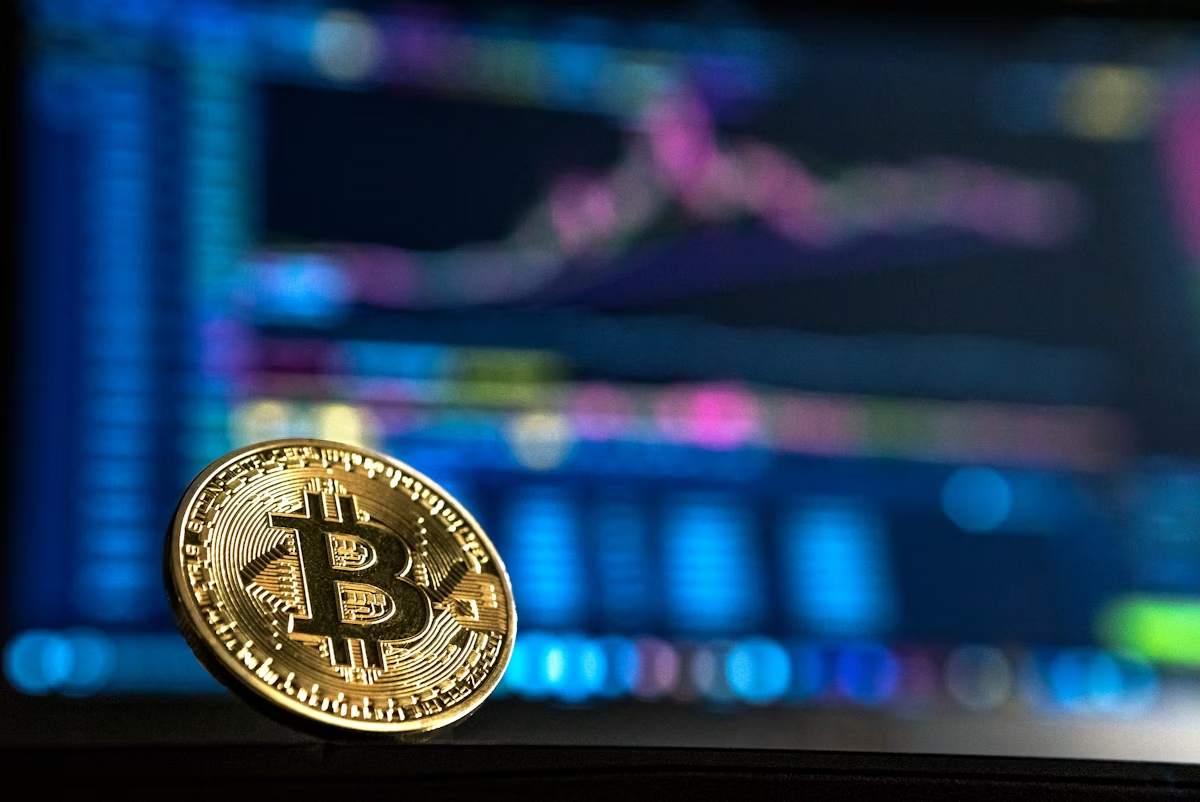Overview: The Blockchain Revolution Develops by 2025
By 2025, the global crypto market capitalisation had stabilised at $4.8 trillion, and blockchain technology was integrated into 65% of enterprise systems, indicating that the cryptocurrency and blockchain space had reached an unprecedented level of maturity. Digital assets have evolved from speculative investments into essential parts of the global financial system due to the convergence of improved scalability, regulatory clarity, and institutional adoption. With 850 million Web3 users and the introduction of Central Bank Digital Currencies (CBDCs) in 12 major economies, the decentralised future is already a reality.
This extensive guide, which is over 2,500 words long, examines:
- Bitcoin Evolution (Store of Value status, institutional adoption, and Layer 2 solutions)
- Ethereum 2.0 Ecosystem (business apps, staking economy, and zk-Rollups)
- NFT Revolution 2.0 (gaming integration, utility-focused tokens, and IP commercialisation)
- Web3 Infrastructure (interoperability, decentralised identity, and DeFi 3.0)
- Regulatory Environment (International frameworks, automation of compliance, and integration of CBDC)
1. The Development of Bitcoin: Digital Gold & Beyond 2025
A. Layer 2 & Scaling Solutions for Bitcoin
| Solution | Adoption Rate | Key Features & Benefits |
|---|---|---|
| Lightning Network | 45% of exchanges | Instant settlements, microtransactions, 1M+ TPS capacity |
| Liquid Network | 38% of institutions | Confidential transactions, asset issuance, sidechain interoperability |
| RootStock (RSK) | 25% of DeFi apps | Smart contracts on Bitcoin, EVM compatibility, 400+ TPS |
| Stacks Protocol | 18% of developers | Clarity smart contracts, Bitcoin-backed assets, NFTs on Bitcoin |
B. Financial Products & Institutional Adoption
Bitcoin Funds & ETFs:
- Find Bitcoin ETFs that are overseeing $285 billion worldwide.
- Forty-five percent of Fortune 500 companies integrate Bitcoin into their 401(k) plans.
- As a hedge against inflation, sovereign wealth funds are investing 1% to 3% in Bitcoin.
Adoption of Corporate Treasury:
- MicroStrategy currently owns 350,000 Bitcoin, or $28 billion.
- With green energy verification, Tesla is reactivating Bitcoin payments.
- Apple is incorporating a hardware-secured Bitcoin wallet into iOS.
2. Ethereum 2.0 Ecosystem: The Platform for Scalable Smart Contracts
A. Full Implementation of Ethereum 2.0
| Upgrade Component | Status | Impact & Benefits |
|---|---|---|
| The Merge Complete | 100% implemented | 99.95% energy reduction, transition to Proof-of-Stake |
| Sharding Implementation | Phase 3 complete | 64 shards, 100,000+ TPS capacity, reduced gas fees |
| zk-Rollup Dominance | 75% of transactions | Near-zero fees, instant finality, Ethereum security |
| Account Abstraction | 90% adoption | Smart accounts, social recovery, gas sponsorship |
B. Staking Economy & DeFi Evolution
Infrastructure for Staking:
- $380 billion in Ethereum staking is the total value locked.
- DeFi participation is made possible by liquid staking tokens, which account for 45% of staked Ethereum.
- Sixty-five percent of institutional staking comes from regulated organisations.
Innovations in DeFi 3.0:
- Cross-chain liquidity: pools that are unified across more than 15 blockchains
- Risk-managed protocols: AI-driven insurance and risk assessment
- Regulatory compliance: Institutional DeFi’s integrated KYC/AML
3. Beyond Digital Art: NFT Revolution 2.0
A. NFT Applications with a Utility Focus
| NFT Category | Market Size | Key Use Cases |
|---|---|---|
| Gaming NFTs | $45 billion | Character ownership, in-game assets, cross-game interoperability |
| Real World Assets | $38 billion | Real estate tokens, vehicle ownership, commodity representation |
| Identity & Credentials | $22 billion | Digital identity, academic credentials, professional licenses |
| Membership & Access | $18 billion | Club memberships, event tickets, subscription services |
B. Integration of Brands and Intellectual Property
Entertainment & Media:
- Character NFTs are being released by Marvel with movie revenue sharing.
- Fan experiences and royalty streams are offered by Warner Music artist NFTs.
- NFT-based story branching in Netflix interactive content
Luxury & Fashion:
- Nike digital trainers that integrate augmented reality and allow for physical redemption
- Authentication and ownership history of LVMH luxury goods
- Gucci virtual clothing for gaming platforms and the metaverse
4. The Decentralised Internet, or Web3 Infrastructure
A. Physical Infrastructure Decentralisation (DePIN)
| Infrastructure Type | Leading Projects | Market Impact |
|---|---|---|
| Decentralized Storage | Filecoin, Arweave, Storj | 35% of cloud storage market, $22 billion value |
| Decentralized Compute | Akash, Render, Gensyn | AI training, rendering farms, scientific computing |
| Decentralized Wireless | Helium, Pollen Mobile | 5G coverage, IoT networks, rural connectivity |
| Decentralized Mapping | Hivemapper, DIMO | Real-time mapping, vehicle data, location services |
B. Decentralised Social & Identity
Self-Governing Personality:
- ENS Dominance: 45 million registered.eth domains
- Credentials that can be verified: W3C standard for digital identity
- Zero-Knowledge Proofs: Identity verification that protects privacy
Platforms for SocialFi:
- Farcaster 2.0: 25 million users on a decentralised social network
- Lens Protocol: Content-monetized social graph
- DeSo 2.0: Social application-optimized blockchain
5. Compliance & the Regulatory Environment in 2025
A. International Regulatory Structures
| Region | Regulatory Status | Key Requirements |
|---|---|---|
| United States | Crypto Clarity Act passed | SEC/CFTC jurisdiction defined, token classification clear |
| European Union | MiCA fully implemented | Licensing requirements, consumer protection, stablecoin rules |
| United Kingdom | Financial Services Act | Sandbox approach, innovation-friendly regulation |
| Asia-Pacific | Harmonized standards | Cross-border cooperation, CBDC integration, tax clarity |
B. Security & Compliance Solutions
Automated Adherence:
- Chainalysis 2.0: Risk scoring and real-time transaction monitoring
- Elliptic Enterprise: 95% of cryptocurrency transactions are compliant with AML
- TRM Labs: Tools for multi-chain intelligence and investigation
Innovations in Security:
- Multi-party computation: Removing single points of failure
- Formal verification: Security of smart contracts demonstrated mathematically
- Protocol-owned insurance against hacks and exploits is known as decentralised insurance.
6. New Developments & Prospects for 2025–2030
A. Blockchain-AI Convergence
| Convergence Area | Development Stage | Potential Impact |
|---|---|---|
| AI-Driven DeFi | Early adoption | Automated strategy optimization, risk management |
| Blockchain for AI | Research phase | Model provenance, data ownership, transparent AI |
| AI Oracles | Growing adoption | Real-world data feeds with verification and quality control |
| Autonomous DAOs | Experimental | AI agents participating in governance and operations |
B. Security & Quantum Resistance
Cryptography after quantum theory:
- Implementation of NIST standards for quantum-resistant algorithms starts
- Lattice-based cryptography: Novel mathematical techniques for protection
- Timelines for migration: five-year plans for major blockchains
Research on Quantum Blockchain:
- Distribution of quantum keys: Unhackable channels of communication
- Enhanced security for key generation through quantum random number generation
- Quantum timestamping: Unchangeable time stamping for legal purposes
FAQs
A. Indeed, Bitcoin has become a store of value with declining volatility and growing institutional adoption, making it a digital gold.
A. Ethereum with Layer 2s: For the majority of applications, the best balance is achieved by combining Ethereum’s security with Layer 2 scalability.
A. Without a doubt, NFTs have developed into useful tokens for identity, gaming, real-world assets, and membership that have actual monetary worth
A. Extremely secure: Major blockchains have demonstrated their resilience to attacks through the use of decentralised security models, formal verification, and sophisticated cryptography.



